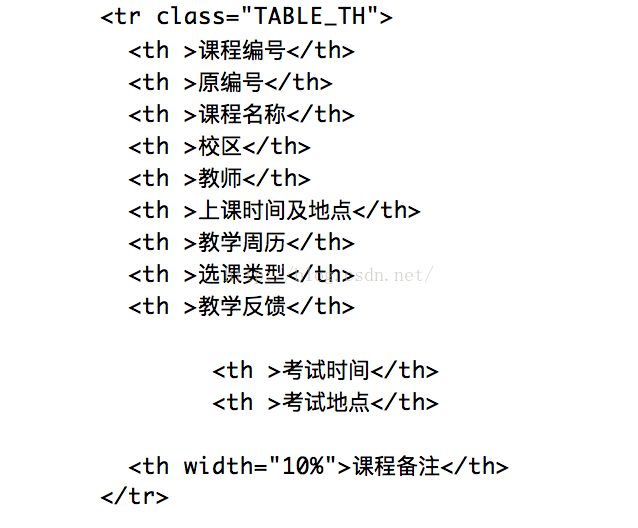- 记录华为OBS文件上传下载多种方式
yychen_java
java华为javaspring
公司要从阿里的oss切换到华为的obs,为了尽量小代价的改动,所以想找和阿里一样上传的方式,之前阿里做的是后端生成文件上传的url,前端做上传动作,这里记录一下obs的多种上传方式。直接上代码:1、获取OBS配置引入mavencom.huaweicloudesdk-obs-java3.21.11其中的各种配置自己在华为平台找到哦。importcom.obs.services.ObsClient;i
- Form表单的三种提交和http请求的三种传参方式,以及Servlet里的取取参方式
哥谭居民0001
httpservlet网络协议
多表单多用于文件上传,因为toacat的实现机制,涉及到了将参数数据临时存储到磁盘上,取的时候只能取字节流get和post虽然在http请求里带参的位置不同但是javaSE里对于HttpServletRequest这个对象定义,这两种传参的取参方式相同假设有一个表单,用户输入了用户名kimi和年龄25,提交GET请求后,URL会变成:http://example.com/FormSubmitSer
- JAVA————十五万字汇总
MeyrlNotFound
java开发语言
JAVA语言概述JAVA语句结构JAVA面向对象程序设计(一)JAVA面向对象程序设计(二)JAVA面向对象程序设计(三)工具类的实现JAVA面向对象程序设计(四)录入异常处理JAVA图形用户界面设计JAVA系统主界面设计JAVA图形绘制JAVA电子相册JAVA数据库技术(一)JAVA数据库技术(二)JAVA数据库技术(三)拓展:JAVA导入/导出——输入/输出JAVA网络通信JAVA多线程编程技
- 在虚拟机上安装Hadoop
杜清卿
hadoop
基本步骤与安装java一致:先用finalshell将hadoop-3.1.3.tar.gz导入到opt目录下面的software文件夹下面,然后解压,最后配置环境变量。1.使用finalshell上传。这里直接鼠标拖动操作即可。2.解压。进入到Hadoop安装包路径下,cd/opt/software/,再解压安装文件到/opt/module下,对应的命令是:tar-zxvfhadoop-.1.3
- 使用 Resilience4j 实现重试
树懒_Zz
Springspringcloudspringbootspring
在本文中,我们将首先简要介绍Resilience4j,然后深入研究其重试模块。我们将了解何时以及如何使用它,以及它提供哪些功能.什么是Resilience4j?应用程序通过网络通信时,许多事情都可能出错。由于连接中断、网络故障、上游服务不可用等原因,操作可能会超时或失败。应用程序可能会相互过载、无响应,甚至崩溃。Resilience4j是一个Java库,可帮助我们构建具有弹性和容错能力的应用程序。
- Tomcat从入门到精通:全方位深度解析与实战教程
墨瑾轩
一起学学Java【一】运维tomcatjava
一、Tomcat入门1.Tomcat简介ApacheTomcat,简称Tomcat,是一个开源的轻量级应用服务器,专为运行JavaServlet和JavaServerPages(JSP)技术设计。它是JavaWeb开发中最常用的Servlet容器之一,遵循JavaServlet和JavaServerPages规范,为开发者提供了一个稳定的、易于使用的部署环境。2.安装与启动安装下载最新版Tomca
- Apache Tomcat 远程代码执行漏洞复现(CVE-2025-24813)(附脚本)
iSee857
漏洞复现apachetomcatjavaweb安全安全
免责申明:本文所描述的漏洞及其复现步骤仅供网络安全研究与教育目的使用。任何人不得将本文提供的信息用于非法目的或未经授权的系统测试。作者不对任何由于使用本文信息而导致的直接或间接损害承担责任。如涉及侵权,请及时与我们联系,我们将尽快处理并删除相关内容。0x01产品描述:ApacheTomcat是一个开源的JavaServlet容器和Web服务器,支持运行JavaServlet、JavaServerP
- Java-校验值区间值的连续性
江节胜-胜行全栈AI
java状态模式开发语言
最新版本更新https://code.jiangjiesheng.cn/article/363?from=csdnc<30,30≤c<60,60≤c<100,100≤c有值时,必须收尾相等。BigDecimalendCheckValue=null;for(BssCompareMethodParameterConfigAddVOconfigRow:actualSampleCompareList){e
- JAVA集合arraylist存取数据_ArrayList集合
月小烟
集合出现的原因数组存储数据是固定存储,当遇到要存储数据的个数不确定的时候数组就不满足了,集合就出现了集合存储数据的个数,可以随着数据量的变化而变化,不会造成越界或者大量的空间浪费存储数据的个数是可变的ArrayList:java.util包下底层维护了一个数组线程不同步(处理速度快)创建ArrayList对象的格式:ArrayList集合名字=newArrayList();:泛型,代表了集合中要存
- 《Java线程池深度解析:从核心参数到饱和策略实战》
云之兕
java基础入门到精通java开发语言
"线程池核心数设置多少合适?为什么任务队列满了会导致OOM?如何设计可降级的异步任务系统?"本文通过电商秒杀场景贯穿线程池参数调优全过程,结合ThreadPoolExecutor源码解析核心机制,并给出动态线程池与监控报警的最佳实践。一、线程池核心参数关系图解graphLRA[提交任务]-->B{核心线程是否已满?}B-->|否|C[创建核心线程执行]B-->|是|D{队列是否已满?}D-->|否
- 【JavaScript】11-JS高阶技巧
beibeibeiooo
JavaScript【已完结】javascript前端ecmascriptes6
本文介绍JS中的一些高阶技巧。目录1.深浅拷贝1.1浅拷贝1.2深拷贝1.2.1通过递归实现1.2.2lodash/cloneDeep1.2.3JSON.stringify()2.异常处理2.1throw抛异常2.2try/catch捕获异常2.3debugger3.处理this3.1this指向3.1.1普通函数this3.1.2箭头函数的this3.2改变this3.2.1call方法改变3.
- java面向对象基础
miehamiha
java开发语言
引入三大特征封装核心思想就是“隐藏细节”、“数据安全”,将对象不需要让外界访问的成员变量和方法私有化,只提供符合开发者意愿的公有方法来访问这些数据和逻辑,保证了数据的安全和程序的稳定。所有的内容对外部不可见。继承子类可以继承父类的属性和方法,并对其进行拓展。将其他的功能继承下来继续发展。多态同一种类型的对象执行同一个方法时可以表现出不同的行为特征。通过继承的上下转型、接口的回调以及方法的重写和重载
- 如何用PHP开发一个api数据接口
幽蓝计划
php
对于一个iOS开发者来说,我一直觉得会写接口是一件很酷的事情,因为它可以实时修改前台数据,而不像App一样需要更新版本和接受审核。更重要的是,它意味着你的技术完成了一个闭环,可以独自完成一整个项目的开发。PHP是我接触的第一个脚本语言,使用之后更是感觉PHP功能强大,开发过程非常友好方便,虽然之后也学习过Python、JavaScript等语言,但现在还是习惯使用PHP,下面就来介绍一下如何用PH
- Java 环境配置与 JAR 文件问题解决全攻略
不羁。。
杂记丨每天亿点小知识javajar开发语言
目录一、Java环境配置指南1.Windows系统配置步骤1.1下载安装JDK1.2配置环境变量2.Linux/macOS系统配置2.1终端命令配置二、JAR文件问题诊断与修复1.检查JAR文件完整性1.1命令行验证1.2哈希值校验2.依赖库管理方案2.1Maven依赖配置示例2.2命令行指定依赖三、常见问题解决方案1.环境变量不生效处理1.1清除系统缓存1.2路径优先级调整2.旧版本残留处理2.
- COMP 315: Cloud Computing for E-Commerce
后端
Assignment1:JavascriptCOMP315:CloudComputingforE-CommerceFebruary20251IntroductionAcommontaskwhenbackendprogrammingisdatacleaning,whichistheprocessoftakinganinitialdatasetthatmaycontainerroneousorinco
- MDC-Mapped Diagnostic Context(映射诊断上下文)
NEUMaple
微服务springbootjavaMDC
MDC,全称为MappedDiagnosticContext(映射诊断上下文),是SLF4J(SimpleLoggingFacadeforJava)提供的一种机制,用于在多线程应用中存储和管理与特定线程相关的上下文信息。这种机制特别适用于需要跨多个方法调用或服务边界传递诊断信息的场景,例如跟踪分布式系统中的请求流。MDC的主要用途日志关联:在分布式系统或多线程应用中,MDC可以用来携带一些上下文信
- Java:Apache HttpClient中HttpRoute用法的介绍
netyeaxi
Javajavaapache开发语言
当使用ApacheHttpClient组件时,经常会用到它的连接池组件。典型的代码如下:PoolingHttpClientConnectionManagerconnectionManager=newPoolingHttpClientConnectionManager();connectionManager.setMaxTotal(httpConfig.getMaxPoolTotal());conn
- 挑战20天学完JavaSE第四天——方法的定义、调用和方法重载
呆呆why care
挑战20天学完javaSEjava笔记改行学it程序人生
Java方法是语句的集合,它们在一起执行一个功能。方法是解决一类问题的步骤的有序组合。方法包含于类或对象中。方法在程序中被创建,在其他地方被引用。设计方法的原则:方法的本意是功能块,就是实现某个功能的语句块的集合。我们设计方法的时候,最好保持方法的原子性,就是一个方法只完成1个功能,这样利于我们后期的扩展。方法的命名规则:首字母小写驼峰命名方法的定义Java的方法类似于其它语言的函数,是一段用来完
- java struts jxl 导入导出Excel(无模板)
weixin_30437847
java数据库javascriptViewUI
jar包:importjavax.servlet.http.HttpServletResponse;importjava.io.OutputStream;importjava.io.File;importjxl.DateCell;importjxl.Sheet;importjxl.Workbook;importjxl.format.Alignment;importjxl.format.Border
- ZooKeeper集群高可用性测试与实践:从规划到故障模拟
磐基Stack专业服务团队
Zookeeperzookeeper可用性测试
#作者:任少近文章目录ZooKeeper集群环境规划1.集群数据一致性测试2.集群节点故障测试ZooKeeper集群高可用性测试的主要目的是确保在分布式环境中,ZooKeeper服务能够持续提供一致性和高可用性的协调服务。ZooKeeper集群环境规划节点ipZooKeeper版本java版本对外端口集群通信端口集群选举端口192.168.x.xZooKeeper-3.6.11.8.0_33221
- Java File 类与文件操作
代码先锋者
java开发java开发语言
一、引言在Java编程中,文件操作是一项非常常见且重要的任务。无论是读取配置文件、保存用户数据,还是进行日志记录,都离不开对文件的操作。Java提供了File类来表示文件和目录的抽象路径名,通过该类可以对文件和目录进行创建、删除、重命名等操作。同时,Java还提供了一系列的输入输出流类,用于对文件内容进行读写操作。本文将详细介绍Java中File类的使用以及相关的文件操作案例。二、File类概述2
- Java 基础数据类型
代码先锋者
java开发java开发语言
一、引言在Java中每个变量都必须先声明其数据类型,才能使用(即Java是强类型语言)。Java的数据类型分为两大类:基本数据类型(PrimitiveDataTypes)和引用数据类型(ReferenceDataTypes)。二、基本数据类型分类Java有8种基本数据类型(如下图所示),可分为四大类(整数型,浮点型,字符型和布尔型):8大基本数据类型具体位数、取值范围和默认值等如下表所示:数据类型
- 【大模型系列】SFT(Supervised Fine-Tuning,监督微调)
Kwan的解忧杂货铺@新空间代码工作室
s2AIGC大模型
欢迎来到我的博客,很高兴能够在这里和您见面!希望您在这里可以感受到一份轻松愉快的氛围,不仅可以获得有趣的内容和知识,也可以畅所欲言、分享您的想法和见解。推荐:kwan的首页,持续学习,不断总结,共同进步,活到老学到老导航檀越剑指大厂系列:全面总结java核心技术,jvm,并发编程redis,kafka,Spring,微服务等常用开发工具系列:常用的开发工具,IDEA,Mac,Alfred,Git,
- 编程自学指南:java程序设计开发,Java 对象创建的6种方式,从new到反射:Java 对象创建全解析,new关键字,反射机制,克隆(Clone),反序列化 ,工厂模式,建造者模式
zl515035644
java自学指南java开发语言
编程自学指南:java程序设计开发,Java对象创建的几种方式一、课程信息学习目标掌握6种主流对象创建方式的实现方法理解每种方式的适用场景与优缺点能根据需求选择最合适的创建方式避免对象创建中的常见错误(如构造器权限问题)二、课程导入:生活中的"创建"场景类比买现成的→new关键字(最常用)复制已有物品→克隆(Clone)按图纸定制→工厂模式(复杂对象)反序列化→从文件/网络恢复对象三、主流创建方式
- Java 泛型
代码先锋者
java开发java开发语言
一、引言在Java编程中,泛型是一项强大的特性,它允许在类、接口和方法的定义中使用类型参数。泛型提供了类型安全的集合,避免了在运行时进行类型转换的风险,提高了代码的可读性和可维护性。二、泛型的基本概念2.1泛型的定义泛型,即“参数化类型”,就是将类型由原来的具体的类型参数化,类似于方法中的变量参数,此时类型也定义成参数形式(可以称之为类型形参),然后在使用/调用时传入具体的类型(类型实参)。2.2
- 使用maven打包项目报错Please refer to...
编程_大白
日常mavenjava
报错描述:PleaserefertoD:\code\java\project_test\usercenter\usercenter_backend\target\surefire-reportsfortheindividualtestresults.Pleaserefertodumpfiles(ifanyexist)[date].dump,[date]-jvmRun[N].dumpand[date
- 探究Three.js中模型移动与旋转的交互逻辑
Front_Yue
3D技术实践指南javascriptthree.js3d
前言Three.js作为一个功能强大的JavaScript3D库,极大地简化了在网页上创建和展示3D图形的过程。它在游戏开发、产品展示、虚拟现实等众多领域都被广泛应用。通过Three.js,开发者能够轻松创建出复杂的三维场景和交互性强的3D应用,为用户带来沉浸式的体验。一、模型移动的交互逻辑实现(一)键盘控制模型移动利用键盘事件来控制模型在三维空间中的位置移动,是一种常见且便捷的交互方式。以下为具
- 从零开始:使用原生JS打造简易飞机大战游戏
西域情歌
本文还有配套的精品资源,点击获取简介:在本教程中,我们将探讨如何利用原生JavaScript的特性,包括事件处理、DOM操作、定时器和音频处理,来构建一个基础的“飞机大战”游戏。该游戏的核心元素包括玩家飞机、敌机、子弹和碰撞检测,它们通过HTML和CSS展现在页面上。通过编写JavaScript脚本,我们实现游戏对象的创建与状态管理,响应用户的键盘和点击事件,更新游戏内容,并通过定时器维护游戏循环
- 【Java学习日记6】:字面量的分类与使用
小蛋6g
Java学习日记java开发语言
一、字面量的定义与作用字面量是程序中直接书写的数据值,无需通过变量或计算获取。它用于表示固定的值,如数字、字符、布尔值等,例如:数字100、字符串"Hello"、字符'A'等。字面量告诉编译器数据的类型和值。字面量就是告诉程序员:数据在程序中的书写格式.---二、字面量的分类Java中的字面量按数据类型可分为以下六类:类型说明示例整数类型不带小数点的数字123,-456小数类型带小数点的数字3.1
- Python, Java, C ++开发全球热能动态监测APP
Geeker-2025
pythonjavac++
开发一个“全球热能动态监测APP”是一个非常有意义的想法,尤其是在能源管理和环境保护领域。以下是开发该APP的详细思路和技术实现方案,分别针对Python、Java和C++。---###**功能需求分析**1.**全球热能数据展示**:-各国或地区的热能生产、消费和进出口数据。-实时监测热能动态(如发电厂的热能输出、温度变化等)。2.**地图可视化**:-在地图上标注热能发电厂的位置。-使用颜色或
- JAVA中的Enum
周凡杨
javaenum枚举
Enum是计算机编程语言中的一种数据类型---枚举类型。 在实际问题中,有些变量的取值被限定在一个有限的范围内。 例如,一个星期内只有七天 我们通常这样实现上面的定义:
public String monday;
public String tuesday;
public String wensday;
public String thursday
- 赶集网mysql开发36条军规
Bill_chen
mysql业务架构设计mysql调优mysql性能优化
(一)核心军规 (1)不在数据库做运算 cpu计算务必移至业务层; (2)控制单表数据量 int型不超过1000w,含char则不超过500w; 合理分表; 限制单库表数量在300以内; (3)控制列数量 字段少而精,字段数建议在20以内
- Shell test命令
daizj
shell字符串test数字文件比较
Shell test命令
Shell中的 test 命令用于检查某个条件是否成立,它可以进行数值、字符和文件三个方面的测试。 数值测试 参数 说明 -eq 等于则为真 -ne 不等于则为真 -gt 大于则为真 -ge 大于等于则为真 -lt 小于则为真 -le 小于等于则为真
实例演示:
num1=100
num2=100if test $[num1]
- XFire框架实现WebService(二)
周凡杨
javawebservice
有了XFire框架实现WebService(一),就可以继续开发WebService的简单应用。
Webservice的服务端(WEB工程):
两个java bean类:
Course.java
package cn.com.bean;
public class Course {
private
- 重绘之画图板
朱辉辉33
画图板
上次博客讲的五子棋重绘比较简单,因为只要在重写系统重绘方法paint()时加入棋盘和棋子的绘制。这次我想说说画图板的重绘。
画图板重绘难在需要重绘的类型很多,比如说里面有矩形,园,直线之类的,所以我们要想办法将里面的图形加入一个队列中,这样在重绘时就
- Java的IO流
西蜀石兰
java
刚学Java的IO流时,被各种inputStream流弄的很迷糊,看老罗视频时说想象成插在文件上的一根管道,当初听时觉得自己很明白,可到自己用时,有不知道怎么代码了。。。
每当遇到这种问题时,我习惯性的从头开始理逻辑,会问自己一些很简单的问题,把这些简单的问题想明白了,再看代码时才不会迷糊。
IO流作用是什么?
答:实现对文件的读写,这里的文件是广义的;
Java如何实现程序到文件
- No matching PlatformTransactionManager bean found for qualifier 'add' - neither
林鹤霄
java.lang.IllegalStateException: No matching PlatformTransactionManager bean found for qualifier 'add' - neither qualifier match nor bean name match!
网上找了好多的资料没能解决,后来发现:项目中使用的是xml配置的方式配置事务,但是
- Row size too large (> 8126). Changing some columns to TEXT or BLOB
aigo
column
原文:http://stackoverflow.com/questions/15585602/change-limit-for-mysql-row-size-too-large
异常信息:
Row size too large (> 8126). Changing some columns to TEXT or BLOB or using ROW_FORMAT=DYNAM
- JS 格式化时间
alxw4616
JavaScript
/**
* 格式化时间 2013/6/13 by 半仙
[email protected]
* 需要 pad 函数
* 接收可用的时间值.
* 返回替换时间占位符后的字符串
*
* 时间占位符:年 Y 月 M 日 D 小时 h 分 m 秒 s 重复次数表示占位数
* 如 YYYY 4占4位 YY 占2位<p></p>
* MM DD hh mm
- 队列中数据的移除问题
百合不是茶
队列移除
队列的移除一般都是使用的remov();都可以移除的,但是在昨天做线程移除的时候出现了点问题,没有将遍历出来的全部移除, 代码如下;
//
package com.Thread0715.com;
import java.util.ArrayList;
public class Threa
- Runnable接口使用实例
bijian1013
javathreadRunnablejava多线程
Runnable接口
a. 该接口只有一个方法:public void run();
b. 实现该接口的类必须覆盖该run方法
c. 实现了Runnable接口的类并不具有任何天
- oracle里的extend详解
bijian1013
oracle数据库extend
扩展已知的数组空间,例:
DECLARE
TYPE CourseList IS TABLE OF VARCHAR2(10);
courses CourseList;
BEGIN
-- 初始化数组元素,大小为3
courses := CourseList('Biol 4412 ', 'Psyc 3112 ', 'Anth 3001 ');
--
- 【httpclient】httpclient发送表单POST请求
bit1129
httpclient
浏览器Form Post请求
浏览器可以通过提交表单的方式向服务器发起POST请求,这种形式的POST请求不同于一般的POST请求
1. 一般的POST请求,将请求数据放置于请求体中,服务器端以二进制流的方式读取数据,HttpServletRequest.getInputStream()。这种方式的请求可以处理任意数据形式的POST请求,比如请求数据是字符串或者是二进制数据
2. Form
- 【Hive十三】Hive读写Avro格式的数据
bit1129
hive
1. 原始数据
hive> select * from word;
OK
1 MSN
10 QQ
100 Gtalk
1000 Skype
2. 创建avro格式的数据表
hive> CREATE TABLE avro_table(age INT, name STRING)STORE
- nginx+lua+redis自动识别封解禁频繁访问IP
ronin47
在站点遇到攻击且无明显攻击特征,造成站点访问慢,nginx不断返回502等错误时,可利用nginx+lua+redis实现在指定的时间段 内,若单IP的请求量达到指定的数量后对该IP进行封禁,nginx返回403禁止访问。利用redis的expire命令设置封禁IP的过期时间达到在 指定的封禁时间后实行自动解封的目的。
一、安装环境:
CentOS x64 release 6.4(Fin
- java-二叉树的遍历-先序、中序、后序(递归和非递归)、层次遍历
bylijinnan
java
import java.util.LinkedList;
import java.util.List;
import java.util.Stack;
public class BinTreeTraverse {
//private int[] array={ 1, 2, 3, 4, 5, 6, 7, 8, 9 };
private int[] array={ 10,6,
- Spring源码学习-XML 配置方式的IoC容器启动过程分析
bylijinnan
javaspringIOC
以FileSystemXmlApplicationContext为例,把Spring IoC容器的初始化流程走一遍:
ApplicationContext context = new FileSystemXmlApplicationContext
("C:/Users/ZARA/workspace/HelloSpring/src/Beans.xml&q
- [科研与项目]民营企业请慎重参与军事科技工程
comsci
企业
军事科研工程和项目 并非要用最先进,最时髦的技术,而是要做到“万无一失”
而民营科技企业在搞科技创新工程的时候,往往考虑的是技术的先进性,而对先进技术带来的风险考虑得不够,在今天提倡军民融合发展的大环境下,这种“万无一失”和“时髦性”的矛盾会日益凸显。。。。。。所以请大家在参与任何重大的军事和政府项目之前,对
- spring 定时器-两种方式
cuityang
springquartz定时器
方式一:
间隔一定时间 运行
<bean id="updateSessionIdTask" class="com.yang.iprms.common.UpdateSessionTask" autowire="byName" />
<bean id="updateSessionIdSchedule
- 简述一下关于BroadView站点的相关设计
damoqiongqiu
view
终于弄上线了,累趴,戳这里http://www.broadview.com.cn
简述一下相关的技术点
前端:jQuery+BootStrap3.2+HandleBars,全站Ajax(貌似对SEO的影响很大啊!怎么破?),用Grunt对全部JS做了压缩处理,对部分JS和CSS做了合并(模块间存在很多依赖,全部合并比较繁琐,待完善)。
后端:U
- 运维 PHP问题汇总
dcj3sjt126com
windows2003
1、Dede(织梦)发表文章时,内容自动添加关键字显示空白页
解决方法:
后台>系统>系统基本参数>核心设置>关键字替换(是/否),这里选择“是”。
后台>系统>系统基本参数>其他选项>自动提取关键字,这里选择“是”。
2、解决PHP168超级管理员上传图片提示你的空间不足
网站是用PHP168做的,反映使用管理员在后台无法
- mac 下 安装php扩展 - mcrypt
dcj3sjt126com
PHP
MCrypt是一个功能强大的加密算法扩展库,它包括有22种算法,phpMyAdmin依赖这个PHP扩展,具体如下:
下载并解压libmcrypt-2.5.8.tar.gz。
在终端执行如下命令: tar zxvf libmcrypt-2.5.8.tar.gz cd libmcrypt-2.5.8/ ./configure --disable-posix-threads --
- MongoDB更新文档 [四]
eksliang
mongodbMongodb更新文档
MongoDB更新文档
转载请出自出处:http://eksliang.iteye.com/blog/2174104
MongoDB对文档的CURD,前面的博客简单介绍了,但是对文档更新篇幅比较大,所以这里单独拿出来。
语法结构如下:
db.collection.update( criteria, objNew, upsert, multi)
参数含义 参数
- Linux下的解压,移除,复制,查看tomcat命令
y806839048
tomcat
重复myeclipse生成webservice有问题删除以前的,干净
1、先切换到:cd usr/local/tomcat5/logs
2、tail -f catalina.out
3、这样运行时就可以实时查看运行日志了
Ctrl+c 是退出tail命令。
有问题不明的先注掉
cp /opt/tomcat-6.0.44/webapps/g
- Spring之使用事务缘由(3-XML实现)
ihuning
spring
用事务通知声明式地管理事务
事务管理是一种横切关注点。为了在 Spring 2.x 中启用声明式事务管理,可以通过 tx Schema 中定义的 <tx:advice> 元素声明事务通知,为此必须事先将这个 Schema 定义添加到 <beans> 根元素中去。声明了事务通知后,就需要将它与切入点关联起来。由于事务通知是在 <aop:
- GCD使用经验与技巧浅谈
啸笑天
GC
前言
GCD(Grand Central Dispatch)可以说是Mac、iOS开发中的一大“利器”,本文就总结一些有关使用GCD的经验与技巧。
dispatch_once_t必须是全局或static变量
这一条算是“老生常谈”了,但我认为还是有必要强调一次,毕竟非全局或非static的dispatch_once_t变量在使用时会导致非常不好排查的bug,正确的如下: 1
- linux(Ubuntu)下常用命令备忘录1
macroli
linux工作ubuntu
在使用下面的命令是可以通过--help来获取更多的信息1,查询当前目录文件列表:ls
ls命令默认状态下将按首字母升序列出你当前文件夹下面的所有内容,但这样直接运行所得到的信息也是比较少的,通常它可以结合以下这些参数运行以查询更多的信息:
ls / 显示/.下的所有文件和目录
ls -l 给出文件或者文件夹的详细信息
ls -a 显示所有文件,包括隐藏文
- nodejs同步操作mysql
qiaolevip
学习永无止境每天进步一点点mysqlnodejs
// db-util.js
var mysql = require('mysql');
var pool = mysql.createPool({
connectionLimit : 10,
host: 'localhost',
user: 'root',
password: '',
database: 'test',
port: 3306
});
- 一起学Hive系列文章
superlxw1234
hiveHive入门
[一起学Hive]系列文章 目录贴,入门Hive,持续更新中。
[一起学Hive]之一—Hive概述,Hive是什么
[一起学Hive]之二—Hive函数大全-完整版
[一起学Hive]之三—Hive中的数据库(Database)和表(Table)
[一起学Hive]之四-Hive的安装配置
[一起学Hive]之五-Hive的视图和分区
[一起学Hive
- Spring开发利器:Spring Tool Suite 3.7.0 发布
wiselyman
spring
Spring Tool Suite(简称STS)是基于Eclipse,专门针对Spring开发者提供大量的便捷功能的优秀开发工具。
在3.7.0版本主要做了如下的更新:
将eclipse版本更新至Eclipse Mars 4.5 GA
Spring Boot(JavaEE开发的颠覆者集大成者,推荐大家学习)的配置语言YAML编辑器的支持(包含自动提示,
